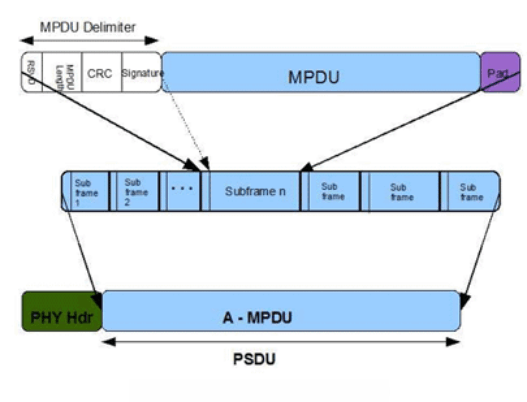SWRU423A July 2015 – May 2016 WL1801MOD , WL1805MOD , WL1807MOD , WL1831MOD , WL1835MOD , WL1837MOD
-
WiLink 8 WLAN Features Guide
- Trademarks
- 1 Introducion
- 2
General Features
- 2.1 Supported Rates
- 2.2 High-Throughput (HT) Features
- 2.3 Quality of Service (QoS)
- 2.4 Protection Types
- 2.5 Suspend and Resume
- 2.6 WoW (Wake on WLAN)
- 2.7 Set TX Power
- 2.8 5-GHz Antenna Diversity
- 2.9 Wi-Fi – Bluetooth/Bluetooth Smart Coexistence
- 2.10 Wi-Fi – ZigBee Coexistence
- 2.11 Accurate Synchronization Over Wi-Fi
- 3
Single Role: Station
- 3.1 Scanning
- 3.2 Connection
- 3.3 Disconnection
- 3.4 DHCP Client
- 3.5 Security
- 3.6 Filtering
- 3.7 Auto ARP
- 3.8 Preferred Networks (Profiles)
- 3.9 Power-Save Mode
- 3.10 Power-Save Delivery Protocols
- 3.11 Keep-Alive Mechanism
- 3.12 Smart Config
- 3.13 Regulatory Domain
- 3.14 DFS Slave (Channel Switch)
- 3.15 Roaming
- 4 Single Role: AP
- 5 Single Role: P2P
- 6 Single Role: Mesh
- 7 Multi-Role
- 8 Performance
- Revision History
2.2.4 A-MPDU and A-MSDU
There are two methods available to perform frame aggregation: aggregate MAC protocol service unit (A-MSDU) and aggregate MAC protocol data unit (A-MPDU). The main distinction between MSDU and MPDU is that the former corresponds to the information that is imported to or exported from the upper part of the MAC sublayer from or to the higher layers, respectively, whereas, the later relates to the information exchanged from or to the PHY by the lower part of the MAC. Aggregate exchange sequences are made possible with a protocol that acknowledges multiple MPDUs with a single block ACK.
A-MSDU: The principle of the A-MSDU (or MSDU aggregation) is to allow multiple MSDUs to be sent to the same receiver concatenated in a single MPDU. This improves the efficiency of the MAC layer, specifically when there are many small MSDUs, such as TCP acknowledgments. The main motivations for aggregation at the MSDU layer are:
- Ethernet is the native frame format for most clients
- Because the Ethernet header is much smaller than the 802.11 header, the multiple Ethernet frames can be combined to form a single A-MSDU.
WiLink8.0 supports A-MPDU for both TX and RX and A-MSDU for RX (see Figure 1).
 Figure 1. A-MPDU Aggregation
Figure 1. A-MPDU Aggregation The decision of using A-MSDU versus A-MPDU is a tradeoff between probability of error and retransmission costs in an A-MSDU, versus MAC frame header overheads in an aggregate with A-MPDU. In most real-world systems, the later wins and most systems implement A-MPDUs.